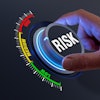
In early May, a phishing email reached approximately a million Google users. The email claimed to have come from Google Docs—a service that allows people to share and edit documents online. And, to users, it appeared to come from legitimate contact. The email asked users to click on a link and follow the instructions, giving hackers access to the user’s email account. This scam impacted personal and corporate email accounts across the globe, and had many IT managers scrambling to block access.
The scam highlights a critical risk faced in today’s corporations and in supply chains. But it’s a need corporate leadership is already aware of, reports Patrick Connaughton, senior research director at The Hackett Group. He reports that for the first time—ever—participants in the consultancy’s annual sourcing and procurement benchmarking research for 2017 put cybersecurity at the top of their list of concerns.
Deloitte’s Global Chief Procurement Officer Survey, 2017, reported similar findings with 90 percent of its respondents expressing a belief that their industries will be disrupted by digital technology, and just 44 percent indicating they are adequately prepared for these disruptions.
Today’s supply chains, as articles in this issue on blockchain, digitization in procurement and 3D printing clearly show, are becoming increasingly reliant on digital technologies and electronic data from sourcing and manufacturing to distribution. Supply chain’s digital transformation is upon us, but it appears companies are not fully prepared to take on the cybersecurity challenges this upheaval presents.
Digital technologies and the potential uses for Big Data presents the supply chain with endless opportunities, but also comes with enormous risk. Cyberattacks are just as unpredictable as natural disasters, and can wreak just as much havoc on supply chain. However, while it’s impossible to do anything about Mother Nature, it is possible to ward off cyberattack.
This begins with organizations asking some very important questions: How prepared are we to prevent cyberattack? What technologies do we currently have in place to secure our data? What technologies do we still need? What policies are in place to protect our data? What steps must we take now to prevent problems in the future?
It’s not enough to look at the cybersecurity practices internally, however. Companies also need to consider the cybersecurity practices of their supply chain partners. How are they keeping their data and their information exchanges with your company secure?
The Google docs scam was a nuisance, but should serve as a wakeup call for all. The next attack may be one that steals customer data, intellectual property and more. How prepared is your organization to prevent this? While the digitization of the supply chain has much promise, we also need to be very aware of the cybersecurity risks and responsibilities it brings.














![Pros To Know 2026 [color]](https://img.sdcexec.com/mindful/acbm/workspaces/default/uploads/2025/08/prostoknow-2026-color.mduFvhpgMk.png?ar=16%3A9&auto=format%2Ccompress&bg=fff&fill-color=fff&fit=fill&h=135&q=70&w=240)




